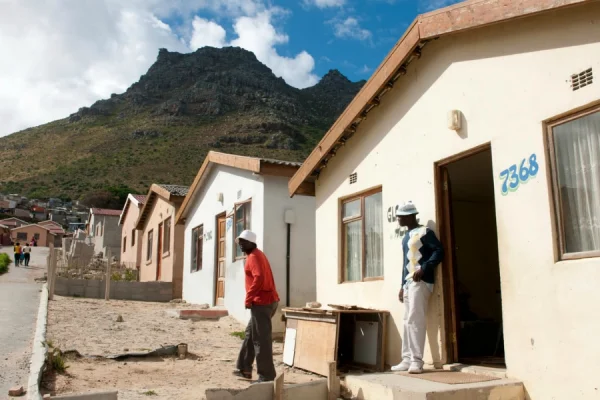Africa’s Housing Crisis: An Analytical Overview
As the second-largest continent on the planet, Africa is home to a diverse population of about 1.4 billion people. Despite its rich culture and vast resources, the continent faces numerous challenges, among which the housing crisis is a pressing issue. The scarcity of affordable housing, a result of rapid urbanization, population growth, and lack of resources, is a problem shared by many African cities. This crisis threatens to undermine the stability of African communities and countries, impacting people’s health, safety, and overall quality of life.
The Current State of the Housing Crisis in Africa
In the last two decades, Africa has experienced significant economic growth. However, this progress has not been evenly distributed, leaving many citizens grappling with poverty and a lack of access to basic needs, such as housing. The World Bank estimates that by 2030, Africa will need to build up to 187 million new homes to keep up with the continent’s rapid population growth, a target that seems far from attainable considering the current pace of development.
Many African cities are grappling with uncontrolled urban growth, with thousands of people moving into metropolitan areas each year in search of better opportunities. This influx of people has led to the expansion of informal settlements or slums, which are growing at an alarming rate. These settlements, characterized by overcrowded living conditions, lack of sanitation, and inadequate access to essential services, represent the stark reality of Africa’s housing crisis.
(Read: How Technology is Impacting Affordable Housing in Rwanda)

Existing Solutions and Their Limitations
Efforts to address Africa’s housing crisis have so far been insufficient and ineffective. Traditional solutions such as government-funded housing projects and private developers have failed to meet the housing needs of the growing population. Government-funded projects often suffer from corruption, inefficiencies, and delays, leading to poorly constructed homes that are not affordable for the average citizen. On the other hand, private developers tend to focus on high-end properties, making their services inaccessible to the majority of Africans.
Additionally, the traditional brick-and-mortar construction methods used in many African countries are costly, time-consuming, and require skilled labor. They also often use materials that are not readily available locally, leading to even higher costs. This has resulted in many Africans living in makeshift structures that lack durability and are not environmentally friendly.
The Urgent Need for Innovative Solutions
To tackle Africa’s housing crisis effectively, there is a need for innovative solutions that prioritize sustainability, affordability, and scalability. One promising approach involves the use of 3D printing technology. This method allows for quick and efficient construction, using less labor and resources than traditional methods. It also allows for customization in design, making it possible to tailor each structure to the unique needs and preferences of the inhabitants.
Another innovative solution involves using eco-friendly and sustainable materials in construction. Materials such as bamboo and earth blocks are readily available in many parts of Africa and can be used to construct homes that are affordable and environmentally friendly.
Implementing New Construction Methods
The adoption of new technology and materials in home construction offers a promising solution to Africa’s housing crisis. A growing number of companies are experimenting with alternative building methods and unconventional construction materials to meet the demand for affordable, sustainable, and safe housing. These include Uganda-based company Easy Housing, which is building prefabricated homes using sustainably sourced timber, and 14Trees, a joint venture that has constructed a school in Malawi using a 3D printer.
Moreover, the use of these innovative construction methods can help attract financing for housing projects. Developers that can demonstrate their green credentials potentially have an advantage with lenders, particularly international sources of finance. Organizations like the World Bank and its private-sector financing arm, the International Finance Corporation, are interested in providing financing for innovative housing solutions that can decarbonize the building sector.

Addressing Financial Challenges
One of the significant obstacles to addressing Africa’s housing crisis is the limited availability of long-term funding for banks. In most banking sectors in Sub-Saharan Africa, retail deposits serve as the primary funding source. Therefore, banks must rely on short-term deposits to fund most mortgage finance, which poses significant liquidity and “gap mismatch” risks for the lending banks.
Moreover, high-interest rates for mortgage loans make them unaffordable for many people. In the region, double-digit interest rates for housing finance are common, limiting mortgage financing to a small portion of households and high-income individuals.
The Role of Government in Addressing the Housing Crisis
Government intervention is crucial in addressing the housing crisis in Africa. In Cape Town, for instance, the government has committed to a faster release of well-located City-owned land for the purpose of affordable housing. They also called on the national government to release large tracts of under-utilized land that they still own in the metro.
In addition to releasing land, governments are also exploring ways to support housing developers. This includes planning support officers in townships, along with off-the-shelf pre-approved building plans for rental units, and the biggest investment in water and sanitation infrastructure in Cape Town’s history.
Conclusion
Tackling Africa’s housing crisis requires a multi-faceted approach that includes policy changes, innovative construction methods, and substantial investments in housing. By adopting these strategies, Africa can build homes that are more affordable, sustainable, and customized to the needs of each community. Furthermore, with a continued focus on innovation and sustainability, Africa can ensure that all people have access to safe and comfortable homes that they can be proud of.






